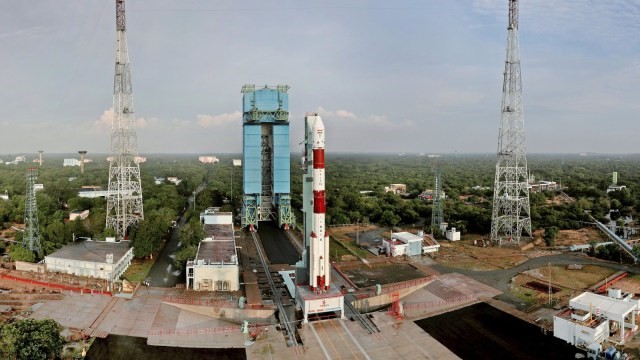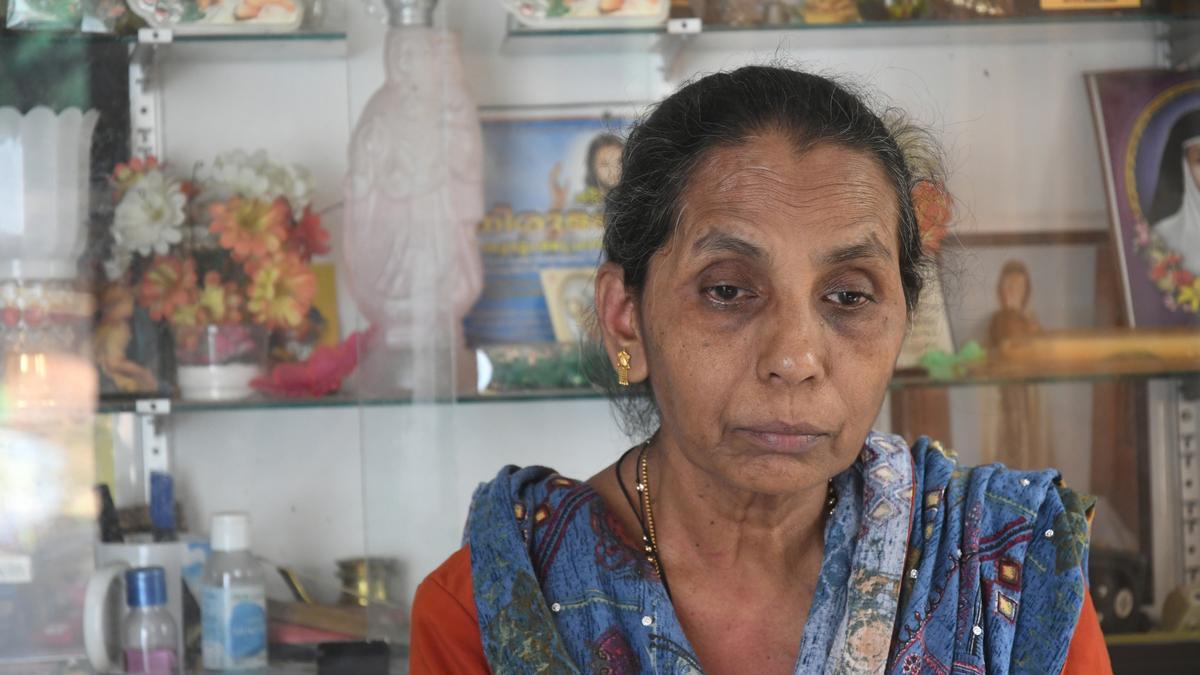Human Papillomavirus (HPV)

- 16 Jan 2025
In News:
January is Cervical Cancer Awareness Month, and the focus on this month underscores the critical importance of preventing cervical cancer, a disease responsible for significant mortality among women in India. At the heart of this prevention is the Human Papillomavirus (HPV) vaccine, which is recognized as the most effective measure to prevent cervical cancer and other HPV-related cancers. Despite its potential, the HPV vaccine remains out of reach for many due to its high cost and the need for greater awareness.
HPV and its Impact in India
HPV is responsible for 99.7% of cervical cancers worldwide, making it one of the primary causes of cancer in women. In India, cervical cancer is the third most common cancer among women, accounting for about 6-29% of all cancers in women. As of GLOBOCAN 2020, India alone has 20% of the global burden of cervical cancer, with over 123,000 cases and a 9.1% mortality rate.
Additionally, HPV can lead to several other cancers, including anal, vulvar, vaginal, penile, and throat cancers, making its vaccination vital for overall cancer prevention.
The HPV Vaccine: A Game-Changer
The HPV vaccine is the most effective tool to prevent infections caused by the virus and reduce the incidence of associated cancers. The vaccine works by stimulating the immune system to produce antibodies that neutralize the virus before it can cause damage. There are different types of vaccines authorized in India, including:
- Gardasil (protects against HPV types 6, 11, 16, and 18)
- Cervarix (a bivalent vaccine targeting HPV 16 and 18)
- Cervavac (India's first HPV vaccine, developed by the Serum Institute of India)
The vaccine is recommended for both males and females between 9 and 26 years, with a special focus on children aged 12 to 13 years, as the vaccine is most effective when administered before exposure to the virus. It’s also suitable for people who are immunocompromised or HIV-infected.
Challenges to HPV Vaccination in India
Despite the obvious benefits, the uptake of the HPV vaccine in India faces several barriers:
- High Costs: The price of the vaccine remains prohibitively high. For example:
- Gardasil 9 costs ?10,850 per dose.
- Gardasil 4 is priced between ?2,000 to ?4,000 per dose.
- Cervavac, the Indian-made vaccine, costs around ?2,000 per dose, which is more affordable but still out of reach for many.
- Awareness and Cultural Perceptions: There is a lack of awareness about HPV and its link to cervical cancer. Cultural factors, particularly around reproductive health, can also create reluctance to vaccinate, especially in rural or conservative areas.
- Limited Access: Currently, the vaccine is available through private practitioners and is not part of the National Immunisation Programme (NIP), limiting access to the broader population.
The Way Forward: National Immunisation and Awareness Campaigns
The National Technical Advisory Group on Immunisation (NTAGI) has recommended that the HPV vaccine be included in India’s National Immunisation Programme (NIP). This would enable broader access and affordability, especially for girls aged 9–14 years and ensure that a routine vaccination schedule is implemented at the age of 9 years. Some states like Punjab and Sikkim have already taken steps to introduce the vaccine in their state-level immunization programs.
Additionally, a nationwide HPV vaccination campaign could raise awareness about the vaccine and its benefits, helping to overcome the challenges of cost, safety concerns, and cultural perceptions. Regular cervical cancer screenings (such as Pap smears and HPV tests) should also be encouraged to identify precancerous changes early.
Cabinet Approves Establishment of ‘Third Launch Pad’ at ISRO's Sriharikota Facility

- 16 Jan 2025
In News:
The Union Cabinet, has approved the establishment of a Third Launch Pad (TLP) at the Satish Dhawan Space Centre (SDSC), located at Sriharikota, Andhra Pradesh. This project marks a significant step in enhancing India’s space capabilities and will support the Next Generation Launch Vehicles (NGLV) for ISRO’s evolving space exploration programs.
Key Features of the Third Launch Pad
The TLP will be built with an adaptable design, capable of supporting NGLV and LVM3 vehicles with semi-cryogenic propulsion. The launch pad will also serve as a standby for the Second Launch Pad (SLP) at Sriharikota. This addition will help ISRO meet its growing launch capacity needs, particularly for future human spaceflight missions and space exploration projects. It will facilitate higher launch frequencies, thus boosting the Indian space ecosystem.
Implementation Strategy and Timeline
The Third Launch Pad is planned to be developed within 48 months (4 years), with the total cost pegged at ?3984.86 Crore. The development will involve maximized industry participation and will utilize existing infrastructure at the launch complex. The project will also leverage ISRO’s experience gained from establishing the earlier launch pads.
The Importance of the Third Launch Pad
The TLP is designed to support the Next Generation Launch Vehicles (NGLV), a key part of ISRO’s vision for space exploration. The facility will not only accommodate heavier vehicles but will also ensure standby capacity for the Second Launch Pad (SLP). Its strategic location at Sriharikota ensures several advantages:
- Proximity to the Equator: This offers a substantial increase in payload capacity due to the additional push provided by the Earth's rotation.
- Safety and Accessibility: The site is free from major international maritime or airline routes, ensuring a safe flight path.
- Geographical Advantage: The launch pad is situated on the eastern coast, enabling launches in an easterly direction, maximizing the benefits of Earth’s rotational speed.
Future Plans for Indian Space Exploration
The establishment of the Third Launch Pad is crucial for the expanded vision of India’s space program, particularly in line with the Amrit Kaal period. ISRO aims to achieve ambitious milestones, such as the Bharatiya Antariksh Station (BAS) by 2035 and an Indian Crewed Lunar Landing by 2040. The NGLV will play a pivotal role in these plans, with features like:
- A three-stage vehicle and reusable first stage.
- Semi-cryogenic propulsion, using refined kerosene and liquid oxygen, which will increase payload capacity by three times at 1.5 times the cost of current vehicles.
The Role of Sriharikota in India’s Space Program
Sriharikota, the hub of ISRO’s launch operations, has been integral to India’s space exploration. Currently, the Indian Space Transportation Systems rely on two operational launch pads:
- First Launch Pad (FLP): Established over 30 years ago for PSLV and SSLV missions, FLP continues to support Polar Satellite Launch Vehicle (PSLV) and Small Satellite Launch Vehicle (SSLV) launches.
- Second Launch Pad (SLP): Built primarily for GSLV and LVM3 vehicles, SLP also serves as a standby for PSLV. Over its 20 years of operation, SLP has supported several national missions, including Chandrayaan-3, and is preparing for the Gaganyaan missions.
Does ‘Blood Money’ Have a Legal Standing?

- 16 Jan 2025
In News:
The concept of ‘blood money’ has come under scrutiny recently, especially in the context of the death sentence awarded to Indian nurse Nimisha Priya from Kerala in Yemen. This case, where the focus is on monetary compensation paid to the victim’s family, has sparked renewed discussions on the practice of blood money.
What is ‘Blood Money’?
‘Blood money’ or diya is a term used in Islamic Sharia law and refers to a sum of money that the perpetrator of a crime must pay to the victim or the victim’s family, typically in cases of unintentional murder or homicide. The custom is designed to offer compensation to the family for the loss of income and alleviate their suffering, rather than placing a price on human life. This practice allows the victim’s family to forgive the accused and avoid retribution, called qisas, under the Sharia.
However, even when blood money is paid, the community or state retains the authority to impose a penalty or punishment, which could include imprisonment or other penalties, based on the seriousness of the crime.
How Does Blood Money Figure in Islamic Sharia Law?
In Islamic law, the amount of blood money varies based on several factors such as the victim’s gender, religion, and nationality. The following examples demonstrate the application of blood money in different Islamic countries:
- Saudi Arabia: In Saudi Arabia, blood money is part of traffic regulations, where the perpetrator must pay compensation to the heirs of victims who die in road accidents. While a Sharia court determines the amount of compensation, the police handle the determination of the guilty party. In workplace accidents, a special committee sets the amount. Saudi Arabia has considered reforming its laws to ensure equal compensation for men and women, Muslims and non-Muslims. However, efforts to amend the laws have not yet been fully implemented.
- Iran: In Iran, blood money differs based on the gender and religion of the victim. A woman’s compensation is typically set at half of that of a man’s. While the Supreme Court of Iran upheld a law to equalize compensation for all individuals in 2019, full implementation of the law has yet to be realized.
- Pakistan: Pakistan has incorporated provisions for diya and qisas in its legal system through the Criminal Laws (Amendment) Ordinance, 1991, aligning its practices with those of Islamic law.
- Yemen: In Yemen, parties involved can negotiate compensation, with judicial oversight ensuring fairness.
India’s Stand on ‘Diya’ and Blood Money
India does not include the provision for blood money in its formal legal framework. However, a similar concept exists in the form of plea bargaining, which allows the accused to negotiate with the prosecution in exchange for a reduced sentence or charge. Plea bargaining involves the defendant pleading guilty to a lesser offense in return for a concession, either in terms of the charges or the sentence.
Plea Bargaining in India:
Introduced under the Criminal Law (Amendment) Act, 2005, plea bargaining was added to the Code of Criminal Procedure, 1973. While it bears some resemblance to blood money in that it allows for compensation to the victim, it has significant limitations:
- It can only be applied to crimes punishable by imprisonment of less than seven years.
- It is not applicable to heinous crimes such as murder or rape, or offenses involving women or children under 14.
- The accused must voluntarily agree to plead guilty, with no coercion involved.
While plea bargaining may include compensation under Section 265E of the Code, discussions continue to refine this provision to make it more inclusive, similar to the reforms seen in Islamic countries regarding blood money.
Historical Practices Similar to Blood Money
Throughout history, various cultures have had practices similar to blood money. These include:
- Brehon Law (Ireland): In the 7th century, Brehon law established the concept of Éraic (body price) and Log nEnech (honor price). These were compensation systems that allowed for the amicable resolution of crimes, avoiding capital punishment.
- Galanas (Wales): Galanas in Welsh law determined compensation based on the victim's social status, where a blood fine was required in cases of murder, unless the killing was justified.
- Wergeld (Germany): The Wergeld system in early medieval Germany required compensation for homicide or grave offenses, often in monetary terms.
- Other Medieval States: Several medieval states established a standard payment for the victims’ families in the event of homicide or serious crimes, much like blood money.
Cases of Indians Pardoned with Blood Money
India has witnessed instances where blood money has been invoked for Indian nationals facing death sentences abroad:
- Arjunan Athimuthu (Kuwait, 2019): Arjunan’s death sentence was commuted to life imprisonment after his family paid ?30 lakh in blood money.
- Abdul Rahim (Saudi Arabia): Abdul Rahim, convicted for the murder of a Saudi boy in 2006, was pardoned after ?34 crore in blood money was paid. However, he has not been released from prison yet.
- UAE Cases:
- In 2017, 10 Indians were pardoned after paying 200,000 dirhams as blood money.
In 2009, 17 Indians on death row for the murder of a Pakistani national were pardoned after a blood money amount of nearly ?4 crore was paid.
US AI Hardware Export Restrictions and Impact on India

- 16 Jan 2025
In News:
Days before demitting office, the Joe Biden administration has released an expansive regulatory framework on the export of artificial intelligence (AI) hardware such as graphics processing units (GPUs), which could have far-reaching consequences for India’s AI ambitions.
Three-Tier Framework for AI Hardware Export Restrictions
- Tier 1: Closest US Allies
- Countries: Australia, Belgium, Canada, South Korea, UK, etc.
- No restrictions on computing power deployment.
- Minimal security requirements.
- Impact: Free access to AI technology for these nations.
- Tier 2: Majority of Countries (Including India)
- Countries: India, Brazil, South Africa, etc.
- Restrictions: Limited to importing approximately 50,000 advanced AI chips (around $1 billion) through 2027.
- Potential to Double Cap: If countries sign agreements to uphold strict security standards.
- Impact on India:
- Short-Term: Likely to fulfill current demand for 10,000 GPUs for the IndiaAI Mission.
- Long-Term: Challenges in scaling AI infrastructure, with possible delays in large AI data centers and difficulty acquiring large-scale GPUs.
- Tier 3: Countries of Concern (Restricted Nations)
- Countries: Russia, China, North Korea, Iran, etc.
- No Access to US AI Technology: Nearly total prohibition of AI tech exports.
Special Provisions for India and China
- General Validated End User (GVEU) status for India and China:
- India: Authorisation for civilian and military use, excluding nuclear applications.
- China: Only civilian use permitted under similar conditions.
Why the US Imposed These Restrictions?
- National Security: Prevent adversaries (China, Iran, Russia) from acquiring advanced AI technologies.
- US Technological Leadership: To protect US AI leadership and prevent loss of competitive edge.
- Trusted Ecosystem: Build secure and trusted AI environments for allied nations.
Impact on India
- Short-Term:
- IndiaAI Mission: Current procurement of 10,000 GPUs unlikely to be affected.
- Subsidized GPUs: Available for startups, academia, and researchers.
- Long-Term Concerns:
- Licensing Uncertainties: Possible delays in large-scale AI deployments and AI data centers.
- Impact on Large Firms: Companies like Reliance and Yotta may face challenges scaling up AI compute infrastructure.
- National AI Mission Challenges: Difficulty in acquiring enough GPUs for large-scale AI projects beyond 2027.
- Strategic Leverage: US could use AI export restrictions to negotiate trade deals or tariff adjustments.
Nvidia’s Criticism of the AI Diffusion Rules
- Overreach and Bureaucratic: Nvidia criticized the 200+ page regulatory framework as excessive, secretive, and bureaucratic.
- Harming US Competitiveness: Claims that the rules would hinder US innovation and global leadership, weakening the competitiveness of the US semiconductor and software industries.
- Contrast with Trump’s Approach: Praises the earlier Trump administration for fostering AI growth through industry competition without compromising national security.
Enforcement of the Rules
- Regulatory Control: Managed by the US Bureau of Industry and Security (BIS) under the Department of Commerce.
- Technology Access: Ensures AI chips and models do not reach adversaries or nations posing security risks.
Potential Impact on India’s AI Strategy
- AI Hardware Infrastructure: Challenges in large-scale AI hardware deployment.
- Competitive Disadvantage: Potential delays or downsizing of AI data centers could affect India’s competitiveness in AI technology.
- Strategic Partnerships: India may need to secure General National Validated End User authorizations to ensure uninterrupted access to advanced chips.
- AI Market Growth: India’s AI market projected to grow to $17 billion by 2027, with an annual growth rate of 25%-35%.
Nine Years of Startup India

- 16 Jan 2025
In News:
On January 16, 2025, India marks nine years of Startup India, a transformative journey that began in 2016. Designated as National Startup Day, this occasion celebrates the nation’s strides in fostering a robust and inclusive entrepreneurial ecosystem.
Current Status (as of Jan 2025)
Over 1.59 lakh startups recognized by DPIIT, making India the 3rd largest startup ecosystem globally.
- More than 100 unicorns (startups valued over $1 billion).
- Key hubs: Bengaluru, Hyderabad, Mumbai, Delhi-NCR; growing contribution from smaller cities.
Key Sectors
- Major sectors: Fintech, Edtech, Health-tech, E-commerce.
- Notable companies: Zomato, Nykaa, Ola exemplify India's shift from job seekers to job creators.
Key Milestones (2016–2025)
- Startups grew from around 500 in 2016 to 1.59 lakh in 2025.
- 73,151 startups with at least one-woman director as of 2024, showcasing rise in women entrepreneurship.
- Over 16.6 lakh jobs created by DPIIT-recognized startups by 2024.
Core Features of Startup India
- Ease of Doing Business: Simplified compliance, self-certification, and single-window clearances.
- Tax Benefits: Three-year tax exemptions for eligible startups.
- Funding Support: ?10,000 crore Fund of Funds for Startups (FFS) supports early-stage funding.
- Sector-Specific Policies: Policies focusing on sectors like biotechnology, agriculture, and renewable energy.
Industry-wise Jobs Created
- IT Services: 2.04 lakh jobs.
- Healthcare & Lifesciences: 1.47 lakh jobs.
- Professional & Commercial Services: 94,000 jobs.
- Total direct jobs created: 16.6 lakh (as of Oct 2024).
Flagship Schemes
- Startup India Seed Fund Scheme (SISFS).
- Credit Guarantee Scheme for Startups (CGSS).
- Fund of Funds for Startups (FFS) Scheme.
Other Key Initiatives
- Capacity Building & Handholding: Workshops for regional ecosystems, especially in non-metro cities.
- Outreach & Awareness: Initiatives to facilitate funding, incubation, and mentorship opportunities.
- Ecosystem Development: National-level events like Startup Mahakumbh to bring together key stakeholders.
- International Linkages: India’s G20 Presidency institutionalized Startup20 to enhance global collaborations.
BHASKAR Platform (Launched in Sept 2024)
- Objective: Centralize and streamline interactions within the entrepreneurial ecosystem.
- Key Features:
- Networking: Connects startups, investors, mentors, and government bodies.
- Resources: Provides quick access to essential tools and knowledge for scaling startups.
- Global Outreach: Promotes India as a global innovation hub.
Startup Mahakumbh
- 2024 Edition: Hosted 1,300 exhibitors, 48,000 visitors, and 392 speakers, including unicorn founders and policymakers.
- 2025 Edition (3-5 April, New Delhi): Theme - “Startup India @ 2047 – Unfolding the Bharat Story.”
